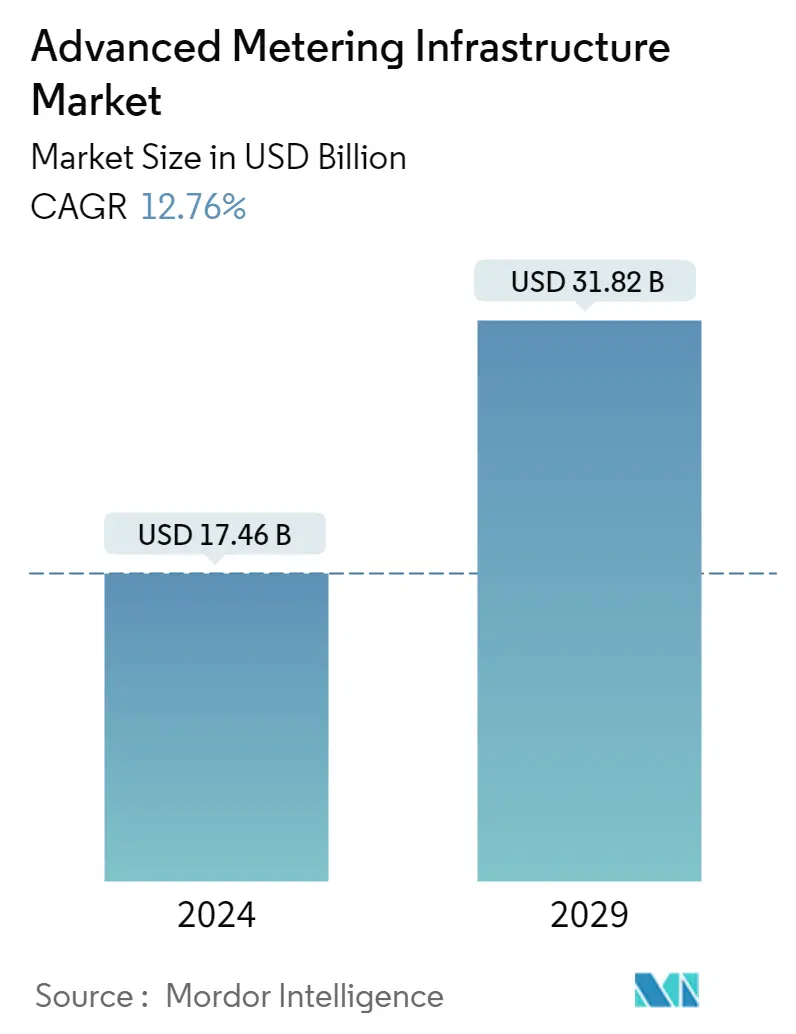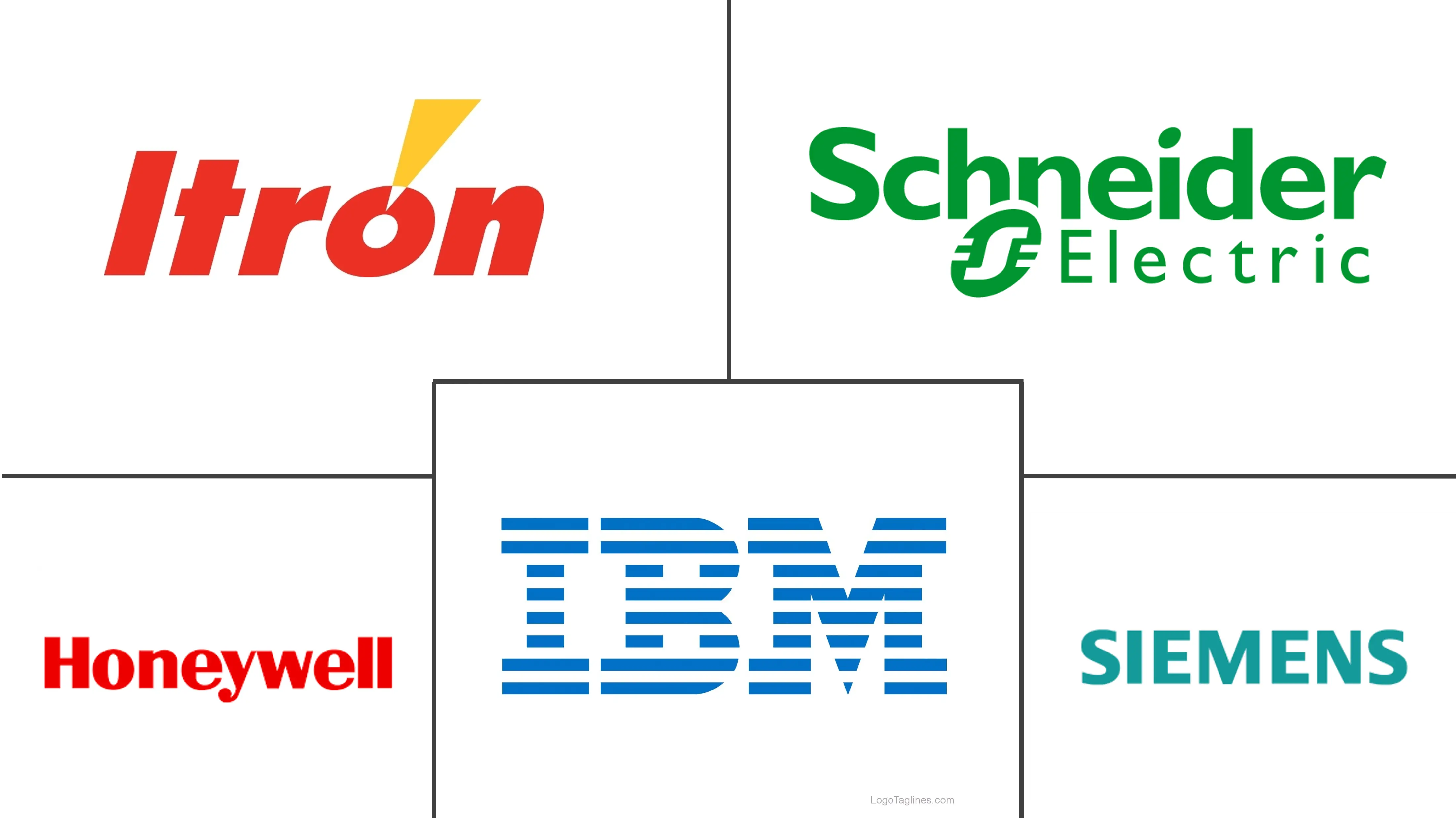Market Size of Advanced Metering Infrastructure Industry

| Study Period | 2019 - 2029 |
| Market Size (2024) | USD 17.46 Billion |
| Market Size (2029) | USD 31.82 Billion |
| CAGR (2024 - 2029) | 12.76 % |
| Fastest Growing Market | Asia-Pacific |
| Largest Market | Asia-Pacific |
Major Players
*Disclaimer: Major Players sorted in no particular order |
Need a report that reflects how COVID-19 has impacted this market and its growth?
Advanced Metering Infrastructure (AMI) Market Analysis
The Advanced Metering Infrastructure Market size is estimated at USD 17.46 billion in 2024, and is expected to reach USD 31.82 billion by 2029, growing at a CAGR of 12.76% during the forecast period (2024-2029).
Smart meters represent a transformative technology for the utility industry. These technologically advanced meters provide greater insight into the usage of energy. Smart meters have been employed as a part of advanced metering infrastructure development initiatives around the world.
- Developing an integrated and IT-enabled power grid and other support software to analyze the patterns provides significant benefits to the user. Such a grid, known as a "smart grid," supports the expansion of distributed production, lowers costs, promotes energy efficiency, and improves the reliability and security of the entire production, transmission, and distribution system. AMI is a vital part of any smart grid initiative. Government agencies and utilities are turning toward AMI systems as part of larger "smart grid" initiatives.
- Smart meter pilot projects are also being launched in European nations like France and the U.K. In the EU, approximately 225 million smart meters for electricity and 51 million for gas will be installed by 2024, according to a study by the European Commission. By 2024, it is anticipated that 44% of European consumers will have smart gas meters, and 77% of them will have smart electric meters.
- The COVID-19 outbreak, on the other hand, had a positive impact on market growth because the energy and utility sectors provide essential services that have forced the sector to rethink how their operations are carried out and how they engage with both their employees and their customers. While the COVID-19 pandemic affected nearly every other aspect, the need to maintain a secure grid remains at the forefront of priorities for utilities. AMI has helped utilities maintain their revenue flow and manage various remote operations during the pandemic.
- Expanding, modernizing, and decentralizing the electricity infrastructure to make it more reliable, as well as planned investments from groups like the World Economic Forum, which has set aside USD 7.6 trillion for smart grids over the next 25 years, are expected to change the way many markets work around the world.
- For the global energy sector to achieve net-zero carbon emissions by 2050, it is estimated that investment in electricity grids must average about USD 600 billion annually through 2030. Therefore, innovation will involve a variety of public and private organizations working together to advance common energy goals. This vision is currently being implemented in Europe. Eight major electric utility providers have formed the Edge for Smart Secondary Substation Alliance (E4S), a partnership with which Intel and other businesses are collaborating to create a smart grid.
- Moreover, Advanced Metering Infrastructure (AMI) communications networks are driven by the need for low-bandwidth, low-cost, delay-insensitive metering. Both the network and the communications module in each meter must be as low-cost as possible. In the early days of AMI, narrow-band power-line communication (PLC) and RF-mesh were the main communication technologies that pushed the use of AMI. As communication technology has developed, newer technologies, like broadband PLC and low-power wide-area networks (LPWAN), have become bigger trends.
- Although AMI has many advantages, implementing it is difficult due to standardization, high upfront costs, and integration with other grid systems. This raises the price of smart metering hardware. Additionally, based on operational needs and consumer demands, various smart meters are designed with additional parameters, which raises their cost. While investing in new technology, managing budgets or securing additional funding is difficult, and the ROI must be precise.
